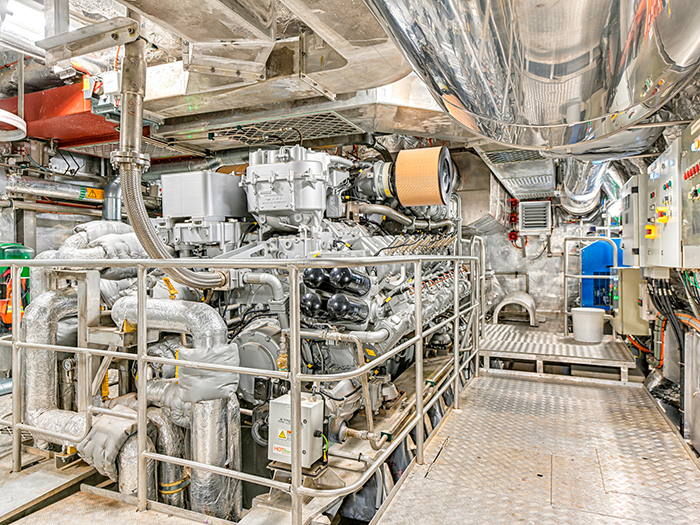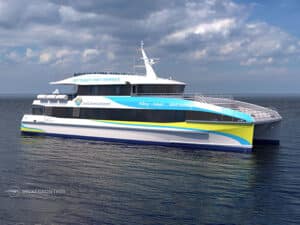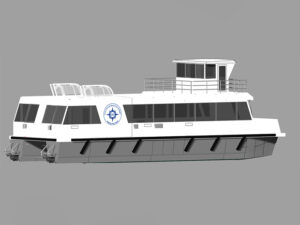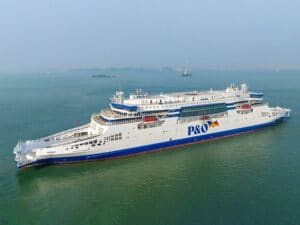
First MTU gas engines make their debut in Doeksen ferry
Written by Nick Blenkey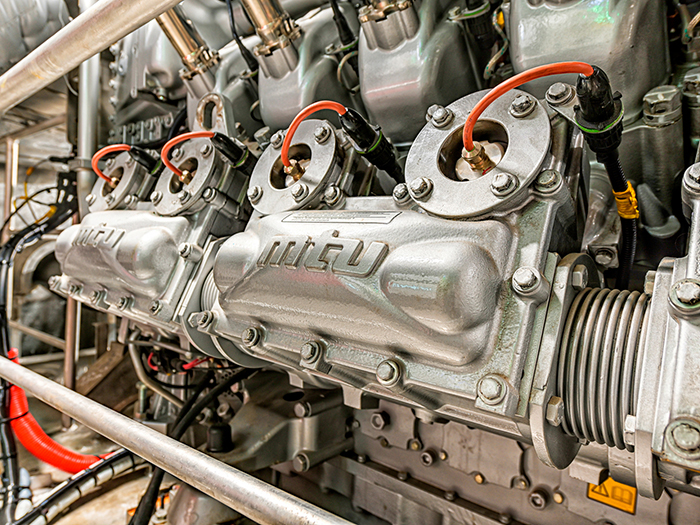
Harlingen, Netherlands, headquartered ferry operator Rederij Doeksen this month officially commissioned the Willem Barentz, the first of two new 70-meter ferries designed for eco friendly operation in the Waddenzee UNESCO heritage area (see earlier story).
The occasion also marked the premiere of the first 16-cylinder MTU gas-only engines.
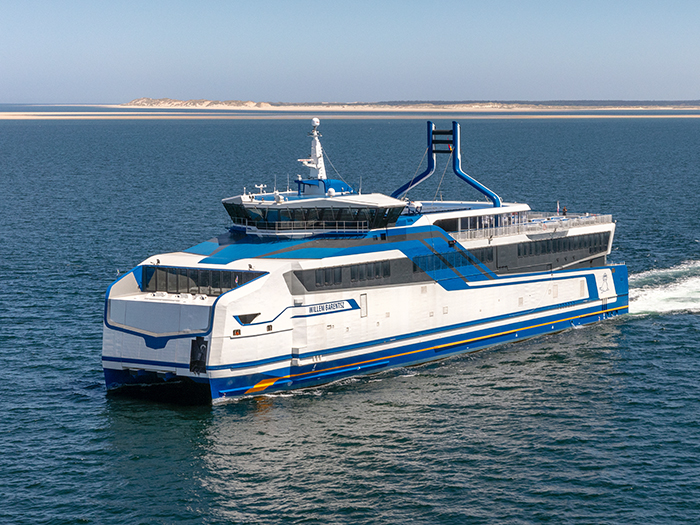
Rolls-Royce originally unveiled its new MTU gas engines for marine propulsion in September 2016, and shipped pre-series engines for Doeksen’s two new catamarans to the Strategic Marine shipyard in Vietnam in late 2017.
The main propulsion systems in each of the two new Doeksen catamarans consists of twin MTU high-speed 16-cylinder Series 4000 gas units, each delivering 1,492 kW and operating on LNG supplied under a long term contract with Titan LNG.
Directly driving the azimuth fixed pitch propellers, the engines enable the vessels to reach cruising speeds of 14 knots. Emissions from the MTU gas engines fall considerably below the current IMO III limits without the need for exhaust aftertreatment – with particle mass, for example, lying under the threshold of deection. The engines emits no sulfur oxides and only very small quantities of nitrogen oxide.
“I’m really impressed with the MTU gas engines. So far, they’ve met all our expectations in terms of performance, transient response behavior, smooth travel and low noise,” said Doeksen managing director Paul Melles.“Rolls-Royce has developed the very first single-fuel gas engine that can drive a fixed pitch propeller directly and is therefore capable of dynamic acceleration. That was the advantage that really made the difference for us.”
“We’re very proud that the Doeksen shipping company has chosen our new gas engines for eco-friendly operation of their ferries on the Wadden Sea, which is recognized as worthy of special environmental protection,” said Knut Müller, head of marine and governmental business at Rolls-Royce Power Systems. “Joining forces with them as our partner, we will be focusing our efforts on driving the energy turnaround.”
A pair of 746-kW, 8-cylinder versions of the gas engine were supplied to the City of Constance, Switzerland, public utility at the end of 2019 for the new Lake Constance ferry, which is planned to be commissioned during the upcoming winter.
Rolls-Royce says the new gas engine is particularly suitable for tugboats, ferries, cargo vessels and special vessels such as research ships. From the very beginning of its development, the focus was on fuel consumption, emissions, safety and acceleration. The gas units are equipped with multipoint fuel injection, dynamic engine control and enhanced turbo-charging. Multipoint fuel injection enables dynamic acceleration capabilities, high power output and reduced emissions. By controlling the combustion process, it also provides higher fuel efficiency.
